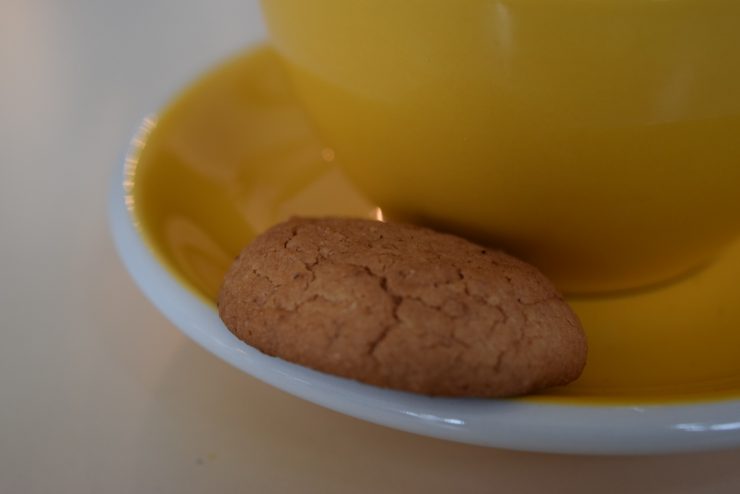
My first Dutch teacher, a tough strawberry blonde who wore a red biker jacket, was quick to teach us that her compatriots are zuinig. But being “economical,” I would come to learn, was a survival strategy in the Lowlands. Floods and famine had programmed inhabitants to dam and to defend, to save and to spare. And while the Netherlands today is well afloat, life in its capital city requires contending with a society still cast in cautiousness. Add to that Protestant modesty and moderation. Ergo “going Dutch.”
But there is one custom for which I have noticed the frugality ethos does not seem to apply: het koekje bij de koffie. That is, the complimentary small cookie or bit of cake served alongside, most commonly, coffee. In fact, sit down in any beverage-vending business in any town in the Netherlands, order coffee, tea or cocoa, and see how it is the rule, not the exception, to find a one- to two-bite sweet perched on your saucer. Frequently, it will be of the mass-produced polypropylene wrapper-encased speculoos variety. But sometimes it will be extraordinary.
The most extravagant koekje I ever got was also the least Dutch. It was a full-sized American-style brownie at the bar of old-school Amsterdam film house The Movies. That luscious square reportedly came from a since-folded chocolatier across the street. Neither my Danish date that night nor I have since experienced that level of cost-free coffee-accompanied bounty anywhere in northern Europe.
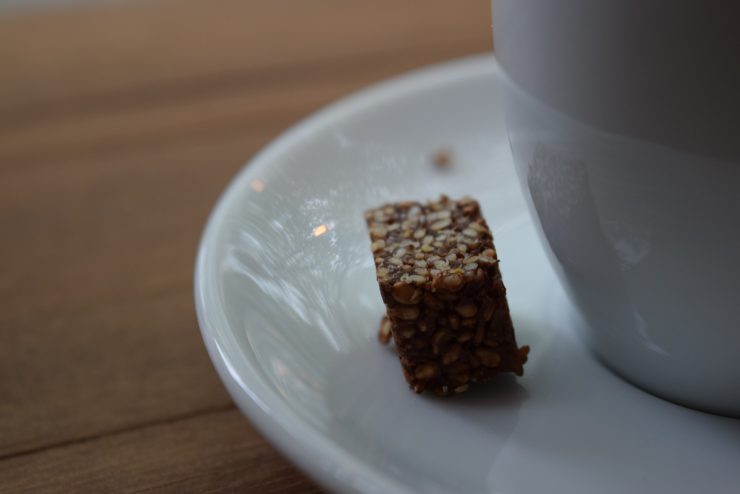
The other day a totally unexpected koekje appeared at Sir Hummus, a new lunch spot run by three Jerusalem natives. “Every place we see here serves something next to the coffee or tea, so we wanted to give a cookie,” co-owner Dori Mozes told me, acknowledging the gesture is not widespread in Israel. Caffeine post-pita is an institution, but a honey and chocolate-compressed cube of sesame seeds with an Ethiopia Sidamo? That was a revelation.
Over time, I have appreciated the predictability of more classic coffee sides. I can always rely on De Ysbreeker, a three-century-old cafe on the Amstel River, to dole out butter cookies. They are not succulent but, cut in the shape of an escutcheon and emblazoned with a letter “Y”, they are semiotically rich. A dimly lit eatery in the building that houses the University of Amsterdam’s special collections feels clinical, yet the choice of an Amsterdamse koggetje, the city’s signature nougat-dotted disk, is poetic.
The tradition of pairing a sugary edible with a hot drinkable is not singularly Dutch. The French have their chocolates; Italians, biscotti; Turks, baklava. But nowhere have I seen it this systematically anticipated or implemented. So why are public venues in the Netherlands so religious about the coupling of cookie and coffee? I posed that question to Cees Holtkamp, the founder of Patisserie Holtkamp, its name a shibboleth of good taste in and around Amsterdam’s canal ring.
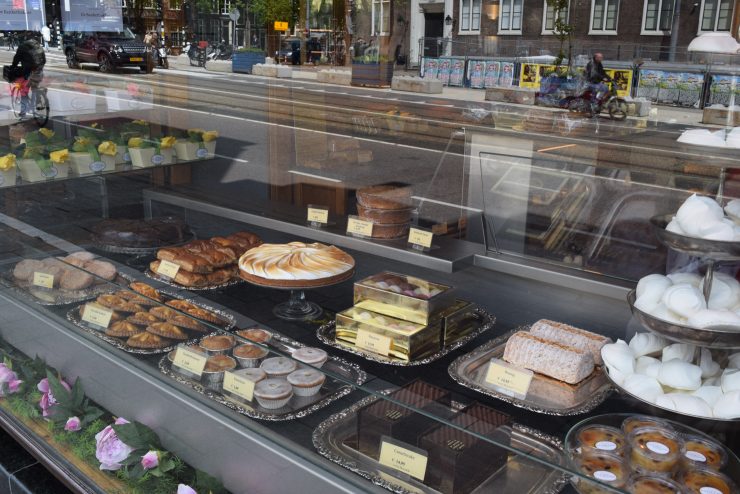
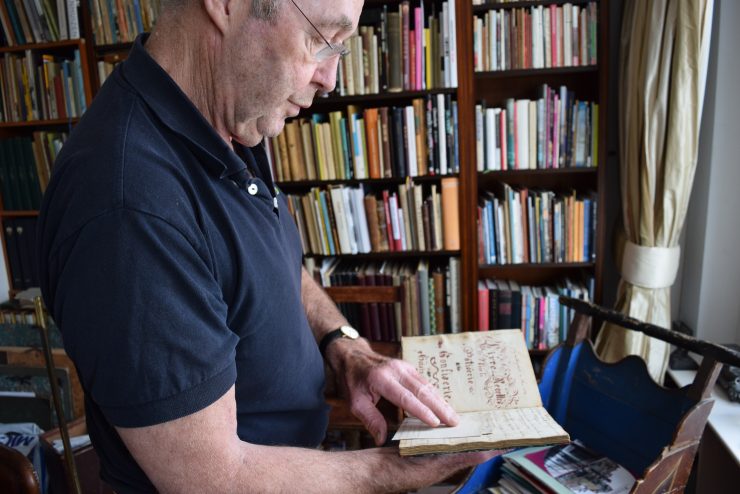
“Albeit very small of course, it is a form of hospitality to be served a little cookie when you just ask for coffee,” said Holtkamp. It was, according to him, just “a little gift.” At his home right above the business, the 73-year-old baker took me on a sail back in time. Over candied orange rinds and a mug of Nespresso, he explained how the Netherlands’ maritime climate yielded a wet flour, which made for cookies that were far more brittle than their French counterparts. Holtkamp estimated that the Dutch hospitality industry had been doing het koekje bij de koffie for about 20 years, in the wake of postwar wealth and well-being. How much longer would it prevail, I wondered.
Last summer I met Julia Lips, a lithe twenty-something who had launched the Tough Cookie Amsterdam campaign and its matching Facebook page. At cafe Edel, sipping a latte that came with a petite block of boterkoek, a dense butter cake, Lips told me how she and her cohorts felt deprived if they bothered to go out and pay more than a couple euros for a coffee but then received nothing with it.
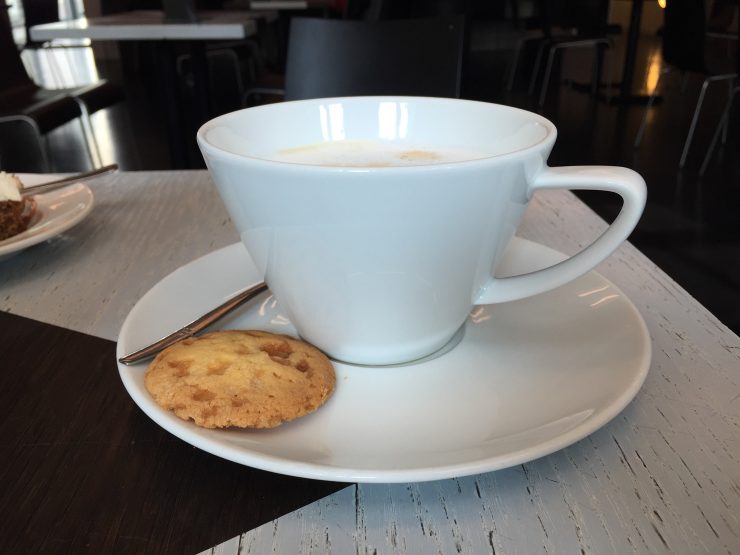
Many places got it right, which they documented in countless photos of cookies basking in the warmth of dreamy foam-topped demitasses and glasses agleam with turgid mint sprigs. But more and more locales, Lips found, were not following the Dutch practice. So on the timeline, too, came the mug shots of more barren cups. Their proprietors were tagged in the gently chastising comments, often punctuated with a frown-y face. “The new hipster cafes, they don’t give you a cookie,” Lips observed. “For them, it’s all about the coffee.”
Maybe her taxonomy was broad-stroked, but she spoke a truth. The new wave of cafes gently crashing onto Dutch shores is disrupting decades of koekje customs. When I think of Amsterdam’s specialty coffee-bars, I see only comestibles that require a premeditated commitment from the customer, her stomach, and her wallet.
Asking these cafe owners why they do not give freely, I hear similar responses. While het koekje bij de koffie sure evokes fond memories of quality time with Grandma, it is not sustainable. Most independent entrepreneurs lack the resources to make products they can give gratis but still feel proud of. It would pain them to juxtapose their well-considered grounds and leaves with factory-made cookies. Above all, not every drink demands dulcification.
“We’re doing this because we need to,” Erik Oosterhuis told me in a tone with barely a trace of his wry humor. The co-owner of Trakteren was pointing to a plastic container storing bean-shaped chocolates, which he and his partner, Edward Beumer, regularly reach into before handing over an otherwise ready-to-drink cup. If they did not decorate their saucers as such, the duo explained, they would get complaints from clients: “‘We need something with the coffee!’”
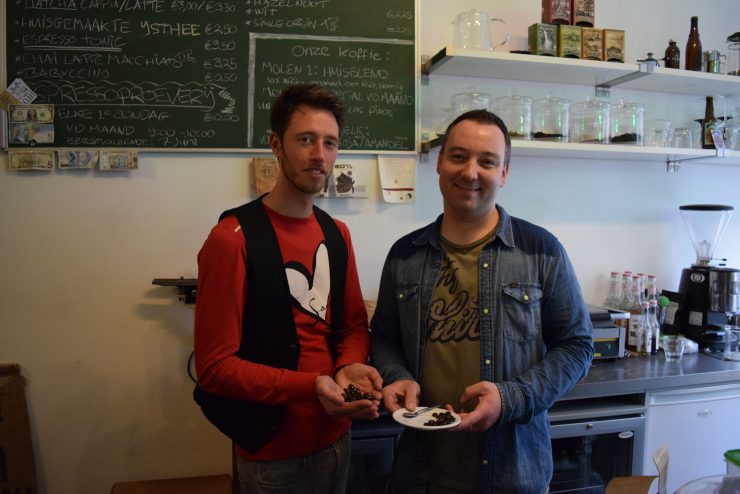
Oosterhuis and Beumer seem bemused, though they admit that not all orders are treated equally. Requests for more “serious things”—for example, filter coffees and, in my recent experience, a bamboo tea prepared with a HandyBrew—come unadorned.
Things are different at Caffènation, just five months old and, I had heard from my Belgian tipster, a rare Third-Waver to indulge in het koekje bij de koffie. Then I saw it for myself. Not only did owner Bert van Wassenhove pull a fine flat white, made from beans roasted in Antwerp, his hometown and former workplace. He delivered it with a bitterkoekje, an aromatic almond macaroon characterized by its pleasantly cracked plumpness.
Van Wassenhove said that where he comes from, a cookie always piggybacks a coffee. When I told him that Caffènation’s Amsterdam branch was locally unrivaled in its perpetuation of, as it turns out, what is also a popular Flemish practice, the reply was modest. “It gives me and the people a home-feel,” he said.
Although Van Wassenhove recognized that “a really strong chocolate or biscuit [could] ruin your palate so you don’t taste the coffee anymore,” he maintained that het koekje bij de koffie was healthy for customer relations, and advocated “starting young, with small children.” For this particular clientele, he realized, a cookie—served without the coffee—could mean “making new customers for life.”
Karina Hof is a freelance journalist based in Amsterdam. Read more Karina Hof on Sprudge.
The post The Dutch Cookie & Coffee Combo Is Making A Major Comeback appeared first on Sprudge.

